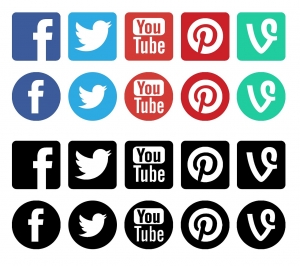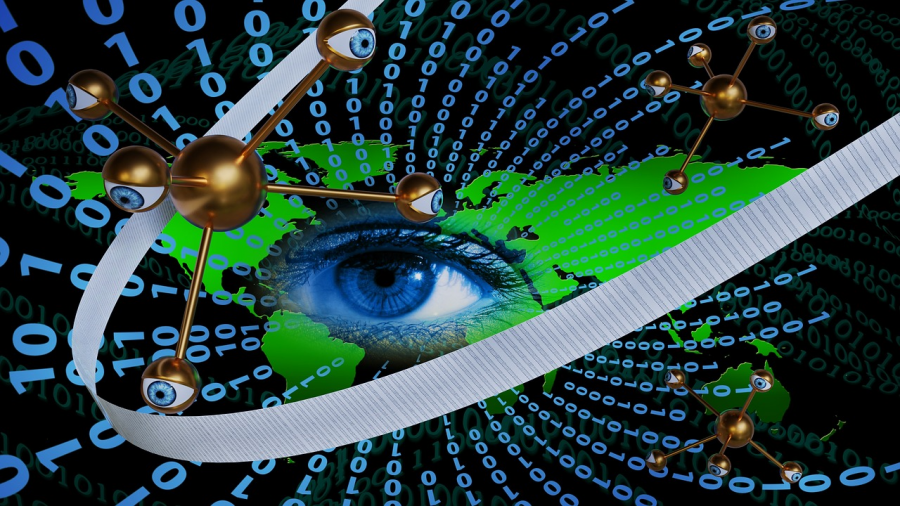Should Schools Monitor Student Social Media Activity?
https://www.needpix.com/photo/1140088/
How much is “Big Brother” watching your every digital move?
As our world leaps forward through the technological revolution, seemingly everything can be found or done online. We can order our groceries with apps, buy trending clothes through websites, and even experience virtual travel. This massive shift to online activities has only been exacerbated by the COVID-19 pandemic, with schools becoming virtual across the globe. However, this transformation of school has also impacted the way we look at safety – especially online. Should schools be able to monitor their students’ online activity for the sake of safety? Or is it simply an invasion of privacy?
It is essential to know that in the United States, public schools are legally required to have a direct plan for monitoring students’ internet presence. This requirement, however, is vague and allows for much interpretation. Some schools only monitor activity on school-issued emails or devices, while others go as far as tracking social media presence and Google searches. It’s hard to know exactly what your school administrators are looking at, but we know what they are searching.
There’s a simple reason for online student surveillance: to monitor significant threats to the school, like shootings, and keep students safe from cyber-bullying. This surveillance only becomes more lucrative as school systems battle with the shift to virtual learning environments in light of the pandemic. School systems in Orange County, Florida, have already started scrutinizing students’ public social media accounts for keywords like ‘self-harm,’ ‘cutting,’ ‘suicide,’ and bullying.’ They are using media monitoring tools like Brand24 that are set up to alert administrations when these words are used online. With the pandemic raging, schools could monitor students’ public location and use that information to prevent the spread of the deadly virus.

It makes sense: the third leading cause of death among 10-14 year-olds is suicide, and school shootings are at an all-time high. Research from the Educator’s School Safety Network shows that most bomb threats, in the past decade, have come from social media. Schools monitor online presence to prevent tragedy and to keep everyone safe.
So why is this even an argument? Doesn’t everyone want to keep schools safe? Well, yes, but the argument against online student surveillance is much more complicated. Among many other issues, the most glaring is that there isn’t any clear evidence that online media tracking is effective, and especially none showing proof that it works better than other methods already being implemented. Students who know that their schools monitor their online activity and flag words like ‘suicide’ and ‘cutting’ may be scared to reach out for help due to the fear of being disciplined by the school district. Evidence from the University of North Carolina proves that these surveillance methods have been disproportionately hurting students of color.
Inevitably, this turns to the discussion of free speech. Does the monitoring of social media by schools impact student privacy and their right to freedom of speech? Technically, no—simply monitoring social media isn’t the same as restricting its use. Schools only look at accounts and information made public. They aren’t seeing anything that another user on the app or website can’t see, and they aren’t able to control what a student posts. This dismisses the idea that schools are infringing on students’ privacy and right to free speech.
As we keep expanding our horizons on the internet, student safety and privacy become increasingly important. Surveillance of social media presence can save lives and prevent tragedy if appropriately executed. The debate continues and will only become more pressing as more of the world we know jumps into cyberspace.
Sources
- Barbara Fedders, The Constant and Expanding Classroom: Surveillance in K-12 Public Schools, 97 N.C. L. Rev. 1673 (2019). Available at: https://scholarship.law.unc.edu/nclr/vol97/iss6/4
- Knight, Will. “Schools Turn to Surveillance Tech to Prevent Covid-19 Spread.” Wired, Conde Nast, www.wired.com/story/schools-surveillance-tech-prevent-covid-19-spread/.
- “School Security Systems Industry – US Market Overview.” Omdia, omdia.tech.informa.com/OM002098/School-security-systems-industry—US-market-overview.


